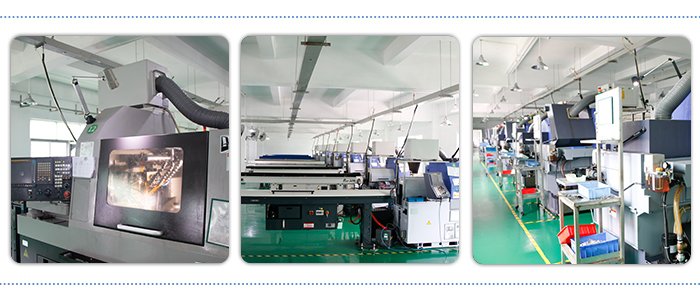As someone who has spent years in the world of CNC machining, I’ve often found myself intrigued by the rapid rise of Artificial Intelligence (AI) in manufacturing. The question on everyone’s mind is clear: Will AI replace CNC programmers? If you’re pondering this too, let me share my insights, based on personal experience and industry trends. Let’s explore whether AI is a threat—or an opportunity—for CNC programming professionals.
The Role of CNC Programmers in Manufacturing
Before diving into AI’s potential, let’s acknowledge the critical role CNC programmers play. These professionals are the architects behind precision manufacturing, creating the code that drives CNC machines to produce complex components with exact specifications.
A CNC programmer’s responsibilities include:
- Translating design files into G-code instructions.
- Optimizing tool paths for efficiency and precision.
- Selecting the right materials and tools for each job.
- Troubleshooting errors and fine-tuning machine operations.
Without skilled programmers, CNC machines—regardless of their sophistication—would be unable to deliver the precision manufacturers demand.
What AI Brings to the Table
AI isn’t about replacing humans outright; it’s about augmentation and automation. In CNC machining, AI introduces capabilities that enhance efficiency and reduce manual workloads. Here’s how AI is making waves:
1. Automated Tool Path Optimization
AI-powered software can analyze CAD models and automatically generate the most efficient tool paths. This reduces the time spent on manual programming while minimizing material waste.
2. Error Prediction and Prevention
AI algorithms can simulate machining processes to identify potential collisions, tool wear, or material inconsistencies before production begins. This proactive approach reduces costly mistakes.
3. Dynamic Adjustments
AI enables real-time adjustments to machining parameters based on live data, ensuring optimal cutting conditions. For example, AI can alter feed rates or spindle speeds to maintain consistent quality.
4. Machine Learning in G-Code Generation
Machine learning allows AI systems to learn from past projects, improving their ability to generate precise G-code over time. This creates a feedback loop that enhances accuracy and efficiency.
Does This Mean CNC Programmers Are Obsolete?
In short: No. While AI is transforming the field, it’s not a wholesale replacement for human expertise. Let me explain why:
1. AI Lacks Contextual Understanding
AI can analyze data and optimize processes, but it doesn’t fully understand the nuances of specific projects. A CNC programmer’s experience and intuition are irreplaceable, particularly for complex or custom jobs.
2. Customization Requires Human Input
Every project is unique. AI tools require human oversight to ensure that designs meet client specifications, account for material variations, and align with manufacturing capabilities.
3. Problem-Solving Remains a Human Skill
AI excels in predictable scenarios but struggles with unanticipated challenges. CNC programmers bring problem-solving skills and creativity that machines cannot replicate.
4. AI Implementation Takes Time
Adopting AI systems isn’t instantaneous. Manufacturers need skilled CNC programmers to bridge the gap during implementation and ensure seamless integration.
The Future: A Collaborative Workforce
Rather than replacing CNC programmers, AI is reshaping their roles. I like to think of AI as a powerful tool in a programmer’s arsenal. Here’s what the future might look like:
1. Enhanced Productivity
AI reduces repetitive tasks, freeing up programmers to focus on higher-level responsibilities, such as optimizing workflows and improving designs.
2. Upskilling Opportunities
As AI tools become integral to manufacturing, CNC programmers will need to learn new skills, such as data analysis and AI system management. This creates opportunities for career growth.
3. Improved Collaboration
AI thrives on collaboration. Programmers and AI systems working together can achieve greater efficiency and precision than either could alone.
How YL-Machining Is Adopting AI
At YL-Machining, we embrace innovation while valuing human expertise. By integrating AI into our CNC machining processes, we’ve achieved:
- Faster Programming Times: AI-driven software accelerates tool path generation.
- Better Quality Control: Real-time error detection ensures consistent results.
- Enhanced Teamwork: Our programmers work alongside AI systems to deliver exceptional products.
We believe the future lies in collaboration, not competition, between humans and machines.
What This Means for CNC Professionals
If you’re a CNC programmer, the rise of AI might feel daunting. But instead of fearing change, consider how you can adapt and thrive:
- Learn About AI: Familiarize yourself with AI tools and how they apply to CNC machining.
- Embrace Continuous Learning: Stay updated on industry trends and invest in training programs to develop new skills.
- Focus on Creativity and Strategy: Leverage AI for repetitive tasks while prioritizing strategic thinking and problem-solving.
Remember, AI is here to augment your abilities, not replace them.
Conclusion: AI and CNC Programming—Partners, Not Rivals
So, will AI replace CNC programmers? Not entirely. While AI is undoubtedly reshaping the landscape, the human touch remains indispensable. AI enhances efficiency and precision, but it cannot replicate the experience, intuition, and creativity of skilled professionals.
At YL-Machining, we see AI as an ally in our mission to deliver top-notch CNC machining services. By combining cutting-edge technology with human expertise, we’re paving the way for a smarter, more efficient future.
What’s your take on this evolving landscape? Are you ready to embrace AI as part of your CNC programming journey? Let’s continue the conversation—drop your thoughts below!






